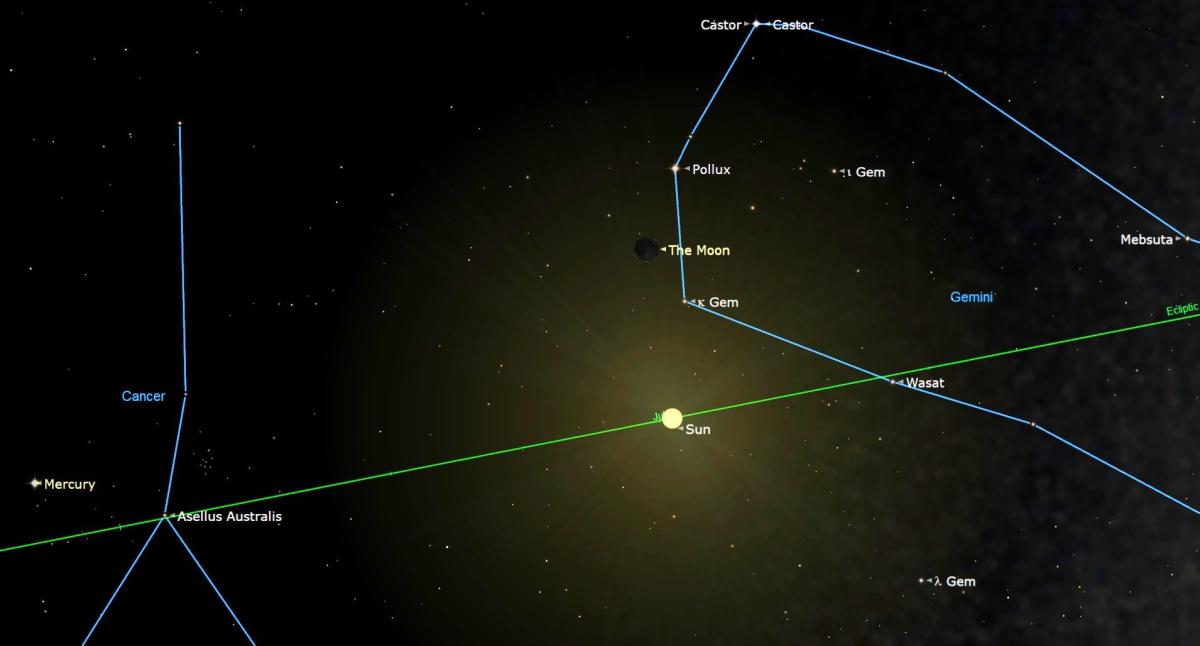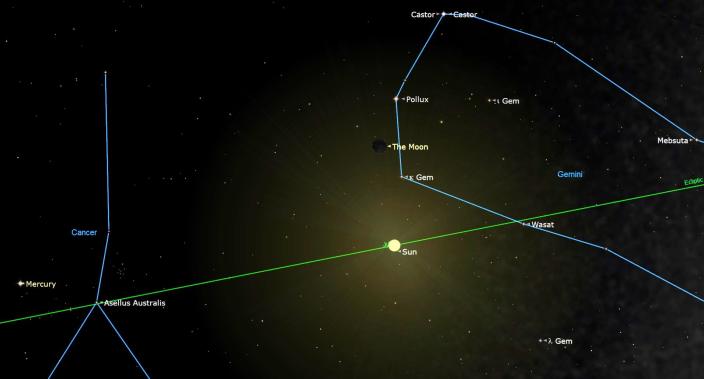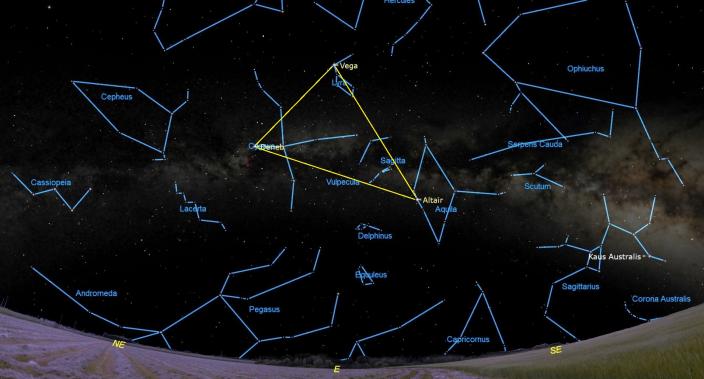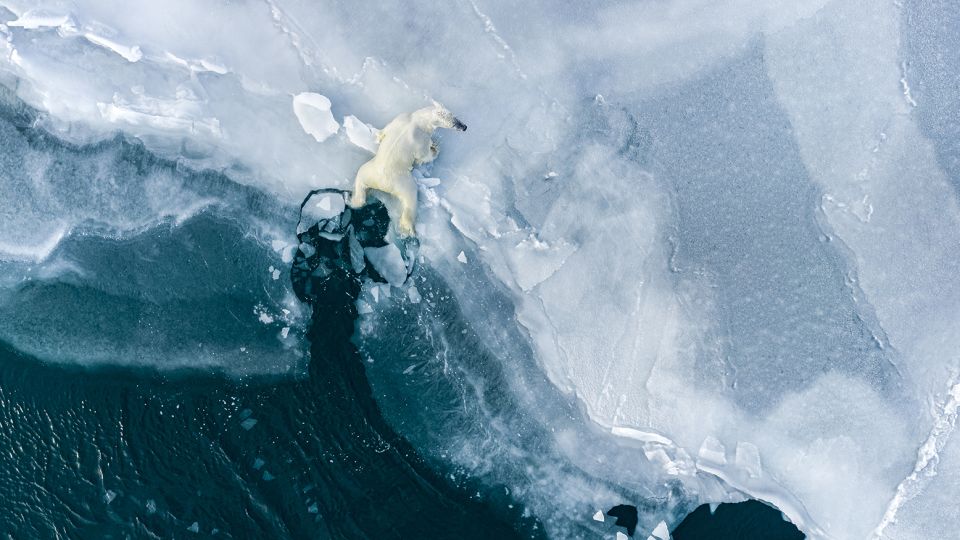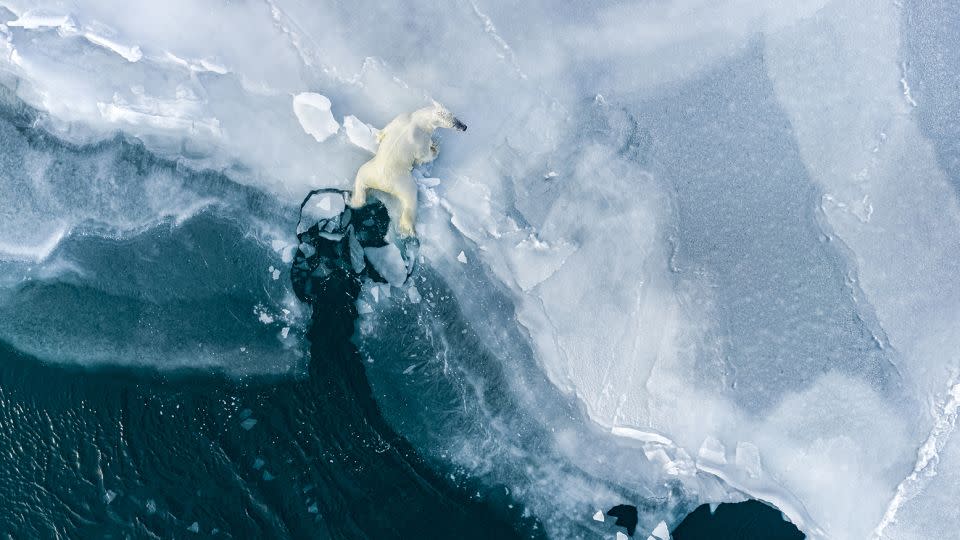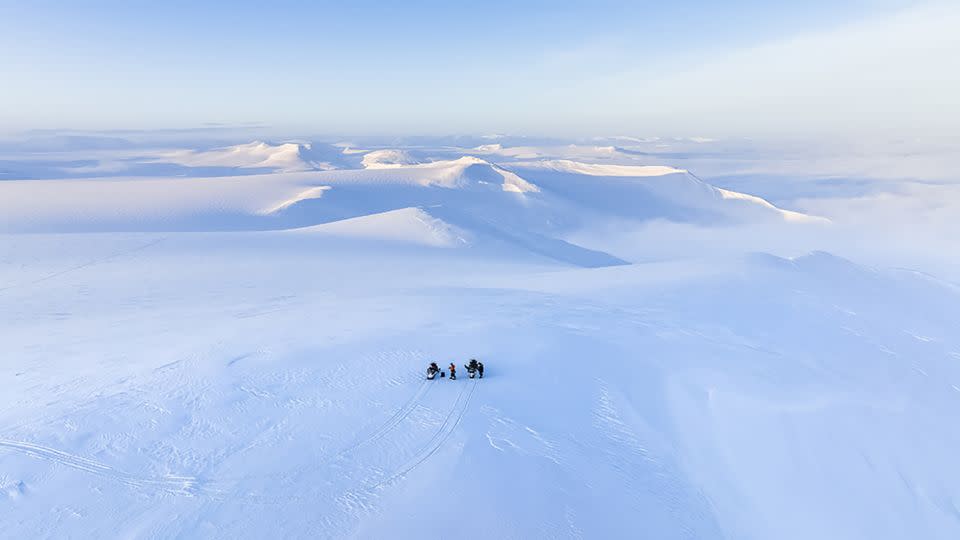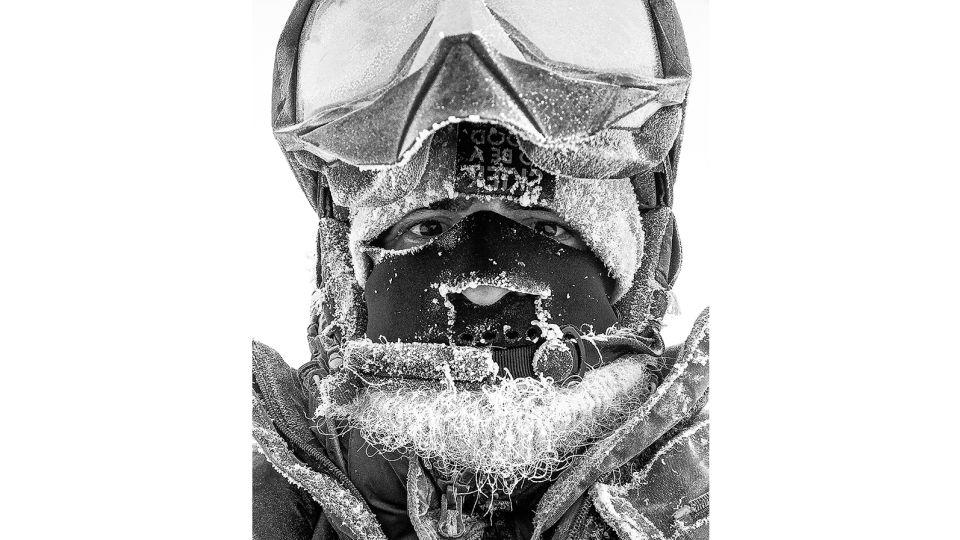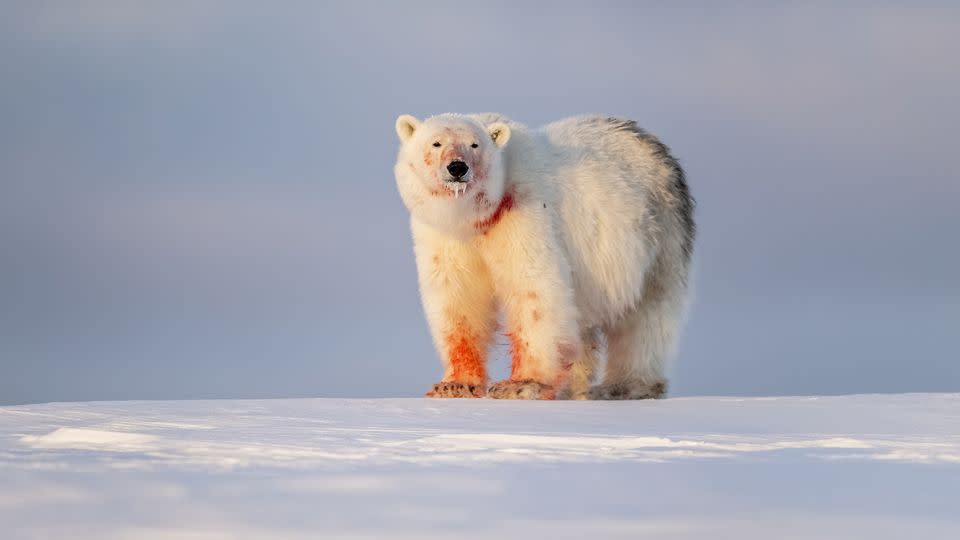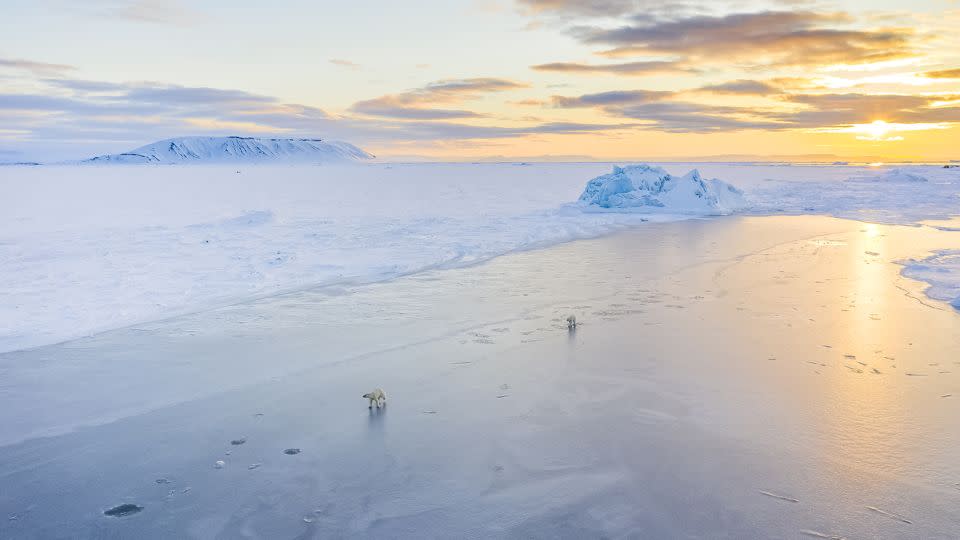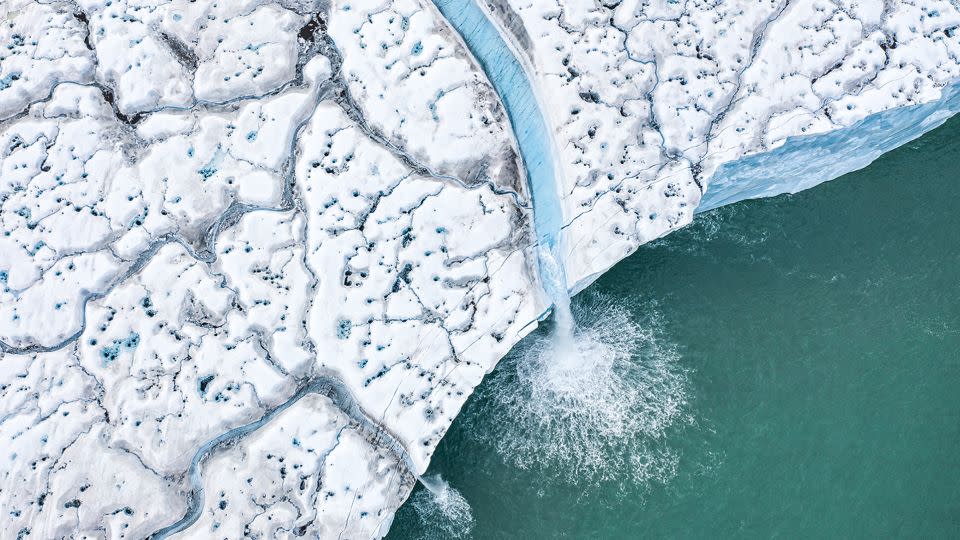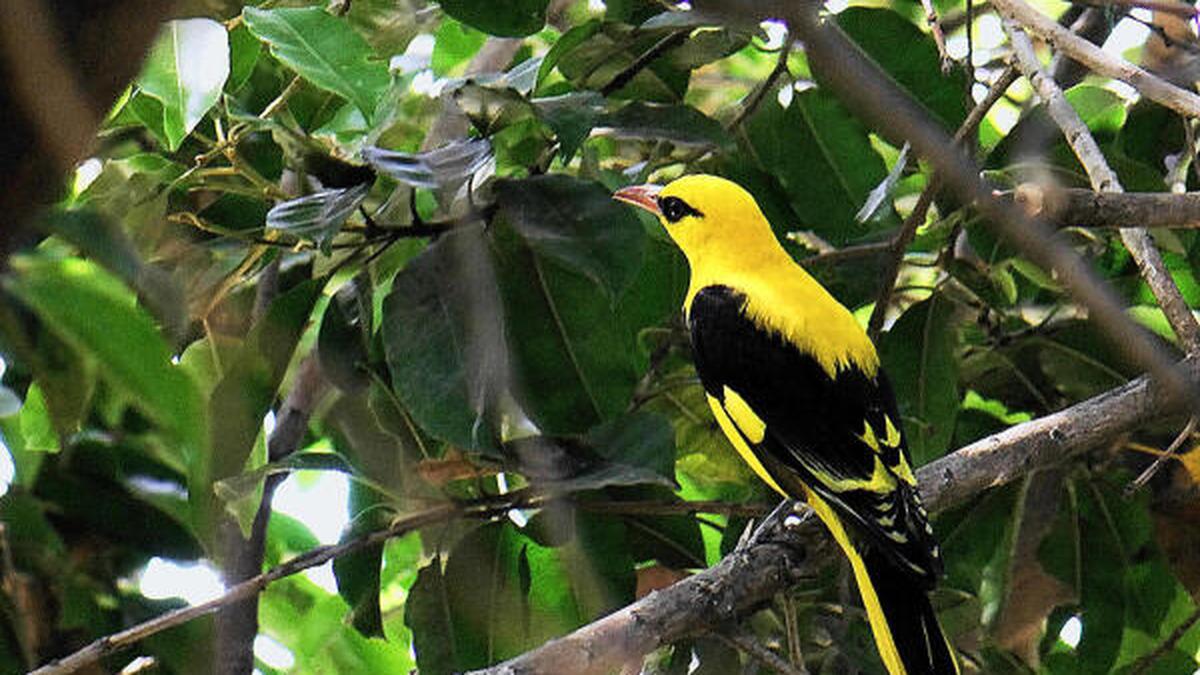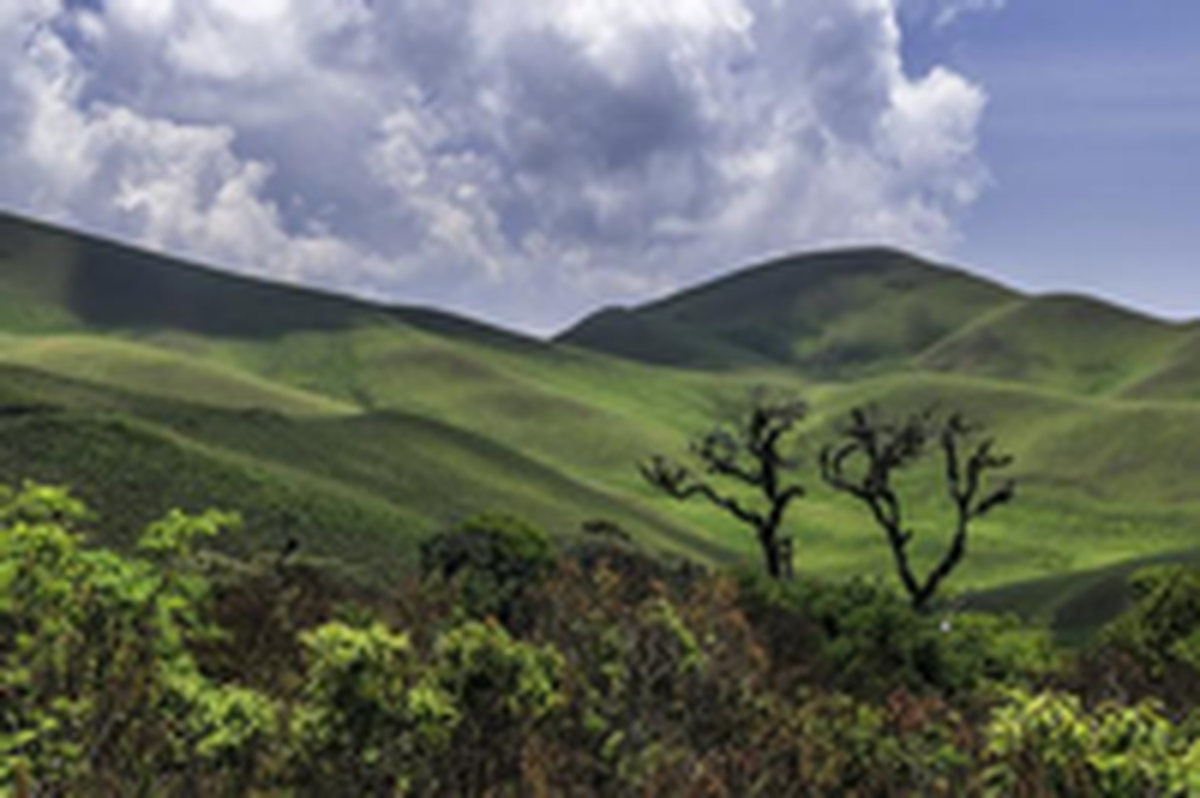
This photo taken on July 10, 2023 shows a lake in the Altun Mountains National Nature Reserve in northwest China’s Xinjiang Uygur Autonomous Region.
With an average altitude of 4,580 meters, the Altun Mountains National Nature Reserve covers a total area of 45,000 square kilometers and is a representative of plateau desert ecosystem in China. (Xinhua/Wang Peng)

This aerial photo taken on July 10, 2023 shows valleys in the Altun Mountains National Nature Reserve in northwest China’s Xinjiang Uygur Autonomous Region.
With an average altitude of 4,580 meters, the Altun Mountains National Nature Reserve covers a total area of 45,000 square kilometers and is a representative of plateau desert ecosystem in China. (Xinhua/Wang Peng)

This aerial photo taken on July 6, 2023 shows snow mountains in the Altun Mountains National Nature Reserve in northwest China’s Xinjiang Uygur Autonomous Region.
With an average altitude of 4,580 meters, the Altun Mountains National Nature Reserve covers a total area of 45,000 square kilometers and is a representative of plateau desert ecosystem in China. (Xinhua/Wang Peng)

This aerial photo taken on June 30, 2023 shows a wetland in the Altun Mountains National Nature Reserve in northwest China’s Xinjiang Uygur Autonomous Region.
With an average altitude of 4,580 meters, the Altun Mountains National Nature Reserve covers a total area of 45,000 square kilometers and is a representative of plateau desert ecosystem in China. (Xinhua/Cai Yang)

This aerial photo taken on July 10, 2023 shows mountains in the Altun Mountains National Nature Reserve in northwest China’s Xinjiang Uygur Autonomous Region.
With an average altitude of 4,580 meters, the Altun Mountains National Nature Reserve covers a total area of 45,000 square kilometers and is a representative of plateau desert ecosystem in China. (Xinhua/Wang Peng)

This aerial photo taken on July 5, 2023 shows a lake in the Altun Mountains National Nature Reserve in northwest China’s Xinjiang Uygur Autonomous Region.
With an average altitude of 4,580 meters, the Altun Mountains National Nature Reserve covers a total area of 45,000 square kilometers and is a representative of plateau desert ecosystem in China. (Xinhua/Wang Peng)

This photo taken on July 8, 2023 shows a night view in the Altun Mountains National Nature Reserve in northwest China’s Xinjiang Uygur Autonomous Region.
With an average altitude of 4,580 meters, the Altun Mountains National Nature Reserve covers a total area of 45,000 square kilometers and is a representative of plateau desert ecosystem in China. (Xinhua/Wang Peng)

A vulture flies over snow mountains in the Altun Mountains National Nature Reserve in northwest China’s Xinjiang Uygur Autonomous Region, July 8, 2023.
With an average altitude of 4,580 meters, the Altun Mountains National Nature Reserve covers a total area of 45,000 square kilometers and is a representative of plateau desert ecosystem in China. (Xinhua/Wang Peng)

This aerial photo taken on July 11, 2023 shows drought-resistant plants in the Altun Mountains National Nature Reserve in northwest China’s Xinjiang Uygur Autonomous Region.
With an average altitude of 4,580 meters, the Altun Mountains National Nature Reserve covers a total area of 45,000 square kilometers and is a representative of plateau desert ecosystem in China. (Xinhua/Wang Peng)

This photo taken on July 9, 2023 shows an area of Danxia landform in the Altun Mountains National Nature Reserve in northwest China’s Xinjiang Uygur Autonomous Region.
With an average altitude of 4,580 meters, the Altun Mountains National Nature Reserve covers a total area of 45,000 square kilometers and is a representative of plateau desert ecosystem in China. (Xinhua/Wang Peng)

This aerial photo taken on July 10, 2023 shows a lake in the Altun Mountains National Nature Reserve in northwest China’s Xinjiang Uygur Autonomous Region.
With an average altitude of 4,580 meters, the Altun Mountains National Nature Reserve covers a total area of 45,000 square kilometers and is a representative of plateau desert ecosystem in China. (Xinhua/Wang Peng)

This aerial photo taken on June 30, 2023 shows a desert in the Altun Mountains National Nature Reserve in northwest China’s Xinjiang Uygur Autonomous Region.
With an average altitude of 4,580 meters, the Altun Mountains National Nature Reserve covers a total area of 45,000 square kilometers and is a representative of plateau desert ecosystem in China. (Xinhua/Cai Yang)

This photo taken on July 1, 2023 shows a wetland in the Altun Mountains National Nature Reserve in northwest China’s Xinjiang Uygur Autonomous Region.
With an average altitude of 4,580 meters, the Altun Mountains National Nature Reserve covers a total area of 45,000 square kilometers and is a representative of plateau desert ecosystem in China. (Xinhua/Cai Yang)

This photo taken on July 9, 2023 shows snow mountains in the Altun Mountains National Nature Reserve in northwest China’s Xinjiang Uygur Autonomous Region.
With an average altitude of 4,580 meters, the Altun Mountains National Nature Reserve covers a total area of 45,000 square kilometers and is a representative of plateau desert ecosystem in China. (Xinhua/Wang Peng)

This aerial photo taken on July 10, 2023 shows a lake in the Altun Mountains National Nature Reserve in northwest China’s Xinjiang Uygur Autonomous Region.
With an average altitude of 4,580 meters, the Altun Mountains National Nature Reserve covers a total area of 45,000 square kilometers and is a representative of plateau desert ecosystem in China. (Xinhua/Wang Peng)

This photo taken on July 1, 2023 shows a wetland in the Altun Mountains National Nature Reserve in northwest China’s Xinjiang Uygur Autonomous Region.
With an average altitude of 4,580 meters, the Altun Mountains National Nature Reserve covers a total area of 45,000 square kilometers and is a representative of plateau desert ecosystem in China. (Xinhua/Cai Yang)

This aerial photo taken on July 5, 2023 shows hills in the Altun Mountains National Nature Reserve in northwest China’s Xinjiang Uygur Autonomous Region.
With an average altitude of 4,580 meters, the Altun Mountains National Nature Reserve covers a total area of 45,000 square kilometers and is a representative of plateau desert ecosystem in China. (Xinhua/Wang Peng)

This photo taken on July 9, 2023 shows an area of Danxia landform in the Altun Mountains National Nature Reserve in northwest China’s Xinjiang Uygur Autonomous Region.
With an average altitude of 4,580 meters, the Altun Mountains National Nature Reserve covers a total area of 45,000 square kilometers and is a representative of plateau desert ecosystem in China. (Xinhua/Wang Peng)

This aerial panorama taken on June 30, 2023 shows a view in the Altun Mountains National Nature Reserve in northwest China’s Xinjiang Uygur Autonomous Region.
With an average altitude of 4,580 meters, the Altun Mountains National Nature Reserve covers a total area of 45,000 square kilometers and is a representative of plateau desert ecosystem in China. (Xinhua/Cai Yang)

This aerial photo taken on July 10, 2023 shows a lake in the Altun Mountains National Nature Reserve in northwest China’s Xinjiang Uygur Autonomous Region.
With an average altitude of 4,580 meters, the Altun Mountains National Nature Reserve covers a total area of 45,000 square kilometers and is a representative of plateau desert ecosystem in China. (Xinhua/Wang Peng)

This aerial photo taken on July 11, 2023 shows a landform shaped by wind erosion in the Altun Mountains National Nature Reserve in northwest China’s Xinjiang Uygur Autonomous Region.
With an average altitude of 4,580 meters, the Altun Mountains National Nature Reserve covers a total area of 45,000 square kilometers and is a representative of plateau desert ecosystem in China. (Xinhua/Wang Peng)

This aerial photo taken on July 11, 2023 shows a landform shaped by wind erosion in the Altun Mountains National Nature Reserve in northwest China’s Xinjiang Uygur Autonomous Region.
With an average altitude of 4,580 meters, the Altun Mountains National Nature Reserve covers a total area of 45,000 square kilometers and is a representative of plateau desert ecosystem in China. (Xinhua/Wang Peng)

This aerial photo taken on July 10, 2023 shows a lake in the Altun Mountains National Nature Reserve in northwest China’s Xinjiang Uygur Autonomous Region.
With an average altitude of 4,580 meters, the Altun Mountains National Nature Reserve covers a total area of 45,000 square kilometers and is a representative of plateau desert ecosystem in China. (Xinhua/Wang Peng)

This aerial photo taken on July 8, 2023 shows snow mountains in the Altun Mountains National Nature Reserve in northwest China’s Xinjiang Uygur Autonomous Region.
With an average altitude of 4,580 meters, the Altun Mountains National Nature Reserve covers a total area of 45,000 square kilometers and is a representative of plateau desert ecosystem in China. (Xinhua/Wang Peng)

Wild yaks graze at a grassland in the Altun Mountains National Nature Reserve in northwest China’s Xinjiang Uygur Autonomous Region, July 1, 2023.
With an average altitude of 4,580 meters, the Altun Mountains National Nature Reserve covers a total area of 45,000 square kilometers and is a representative of plateau desert ecosystem in China. (Xinhua/Cai Yang)

This aerial photo taken on July 6, 2023 shows valleys and an area of Danxia landform in the Altun Mountains National Nature Reserve in northwest China’s Xinjiang Uygur Autonomous Region.
With an average altitude of 4,580 meters, the Altun Mountains National Nature Reserve covers a total area of 45,000 square kilometers and is a representative of plateau desert ecosystem in China. (Xinhua/Wang Peng)

This aerial photo taken on July 11, 2023 shows a landform shaped by wind erosion in the Altun Mountains National Nature Reserve in northwest China’s Xinjiang Uygur Autonomous Region.
With an average altitude of 4,580 meters, the Altun Mountains National Nature Reserve covers a total area of 45,000 square kilometers and is a representative of plateau desert ecosystem in China. (Xinhua/Wang Peng)

This aerial photo taken on July 6, 2023 shows valleys in the Altun Mountains National Nature Reserve in northwest China’s Xinjiang Uygur Autonomous Region.
With an average altitude of 4,580 meters, the Altun Mountains National Nature Reserve covers a total area of 45,000 square kilometers and is a representative of plateau desert ecosystem in China. (Xinhua/Wang Peng)

This aerial photo taken on July 11, 2023 shows a landform shaped by wind erosion in the Altun Mountains National Nature Reserve in northwest China’s Xinjiang Uygur Autonomous Region.
With an average altitude of 4,580 meters, the Altun Mountains National Nature Reserve covers a total area of 45,000 square kilometers and is a representative of plateau desert ecosystem in China. (Xinhua/Wang Peng)

This aerial photo taken on July 10, 2023 shows a rainbow in the Altun Mountains National Nature Reserve in northwest China’s Xinjiang Uygur Autonomous Region.
With an average altitude of 4,580 meters, the Altun Mountains National Nature Reserve covers a total area of 45,000 square kilometers and is a representative of plateau desert ecosystem in China. (Xinhua/Wang Peng)

This aerial photo taken on July 6, 2023 shows snow mountains in the Altun Mountains National Nature Reserve in northwest China’s Xinjiang Uygur Autonomous Region.
With an average altitude of 4,580 meters, the Altun Mountains National Nature Reserve covers a total area of 45,000 square kilometers and is a representative of plateau desert ecosystem in China. (Xinhua/Wang Peng)

This aerial photo taken on July 6, 2023 shows a sunset view in the Altun Mountains National Nature Reserve in northwest China’s Xinjiang Uygur Autonomous Region.
With an average altitude of 4,580 meters, the Altun Mountains National Nature Reserve covers a total area of 45,000 square kilometers and is a representative of plateau desert ecosystem in China. (Xinhua/Wang Peng)

This aerial photo taken on July 8, 2023 shows snow mountains in the Altun Mountains National Nature Reserve in northwest China’s Xinjiang Uygur Autonomous Region.
With an average altitude of 4,580 meters, the Altun Mountains National Nature Reserve covers a total area of 45,000 square kilometers and is a representative of plateau desert ecosystem in China. (Xinhua/Wang Peng)

This aerial photo taken on July 11, 2023 shows a landform shaped by wind erosion in the Altun Mountains National Nature Reserve in northwest China’s Xinjiang Uygur Autonomous Region.
With an average altitude of 4,580 meters, the Altun Mountains National Nature Reserve covers a total area of 45,000 square kilometers and is a representative of plateau desert ecosystem in China. (Xinhua/Wang Peng)

This aerial photo taken on July 10, 2023 shows a lake in the Altun Mountains National Nature Reserve in northwest China’s Xinjiang Uygur Autonomous Region.
With an average altitude of 4,580 meters, the Altun Mountains National Nature Reserve covers a total area of 45,000 square kilometers and is a representative of plateau desert ecosystem in China. (Xinhua/Wang Peng)

This aerial photo taken on July 6, 2023 shows valleys in the Altun Mountains National Nature Reserve in northwest China’s Xinjiang Uygur Autonomous Region.
With an average altitude of 4,580 meters, the Altun Mountains National Nature Reserve covers a total area of 45,000 square kilometers and is a representative of plateau desert ecosystem in China. (Xinhua/Wang Peng)

This aerial photo taken on July 11, 2023 shows a landform shaped by wind erosion in the Altun Mountains National Nature Reserve in northwest China’s Xinjiang Uygur Autonomous Region.
With an average altitude of 4,580 meters, the Altun Mountains National Nature Reserve covers a total area of 45,000 square kilometers and is a representative of plateau desert ecosystem in China. (Xinhua/Wang Peng)

This aerial photo taken on July 6, 2023 shows snow mountains and valleys in the Altun Mountains National Nature Reserve in northwest China’s Xinjiang Uygur Autonomous Region.
With an average altitude of 4,580 meters, the Altun Mountains National Nature Reserve covers a total area of 45,000 square kilometers and is a representative of plateau desert ecosystem in China. (Xinhua/Wang Peng)

This aerial photo taken on July 8, 2023 shows snow mountains in the Altun Mountains National Nature Reserve in northwest China’s Xinjiang Uygur Autonomous Region.
With an average altitude of 4,580 meters, the Altun Mountains National Nature Reserve covers a total area of 45,000 square kilometers and is a representative of plateau desert ecosystem in China. (Xinhua/Wang Peng)

This aerial photo taken on July 10, 2023 shows valleys in the Altun Mountains National Nature Reserve in northwest China’s Xinjiang Uygur Autonomous Region.
With an average altitude of 4,580 meters, the Altun Mountains National Nature Reserve covers a total area of 45,000 square kilometers and is a representative of plateau desert ecosystem in China. (Xinhua/Wang Peng)

